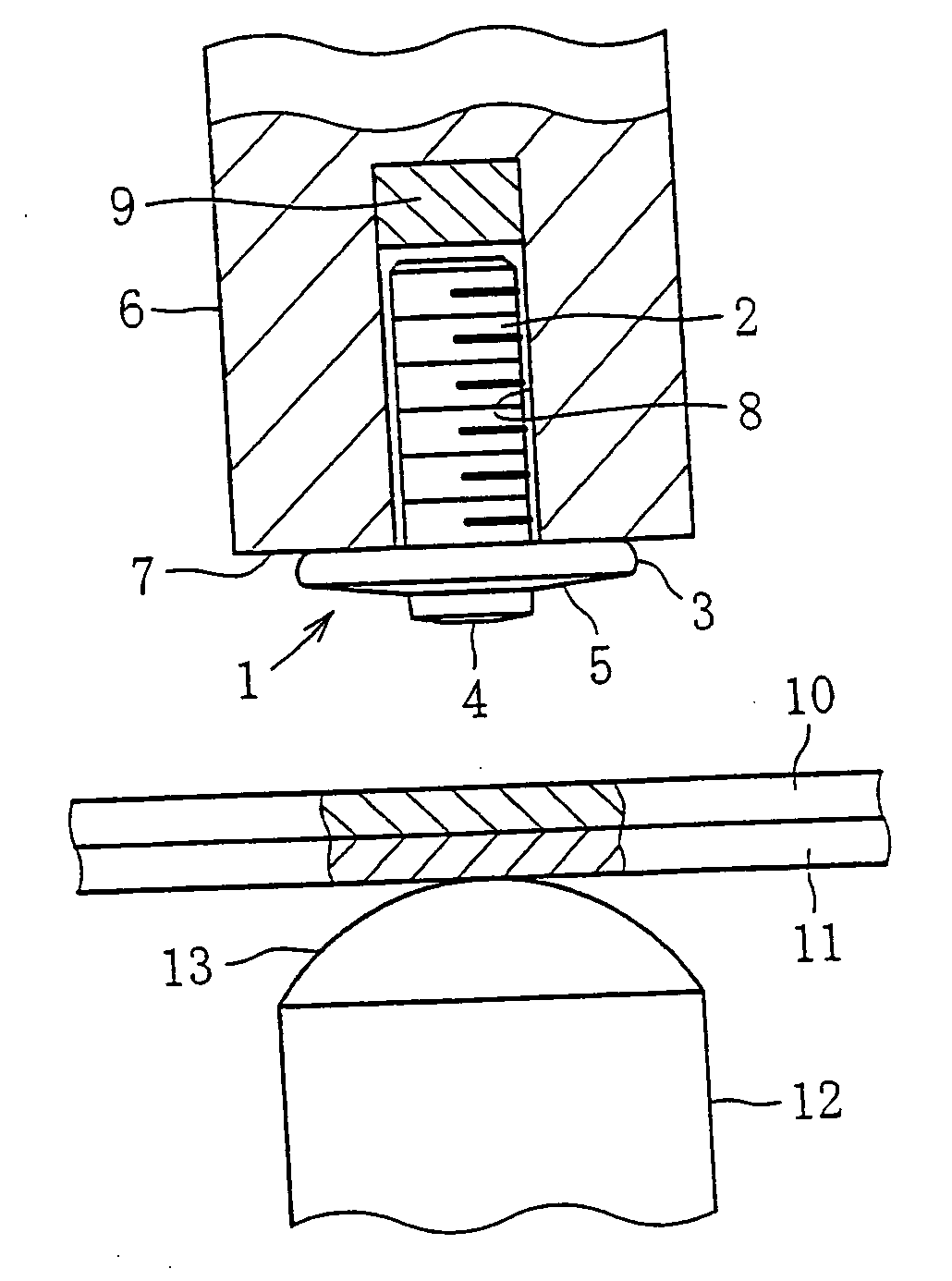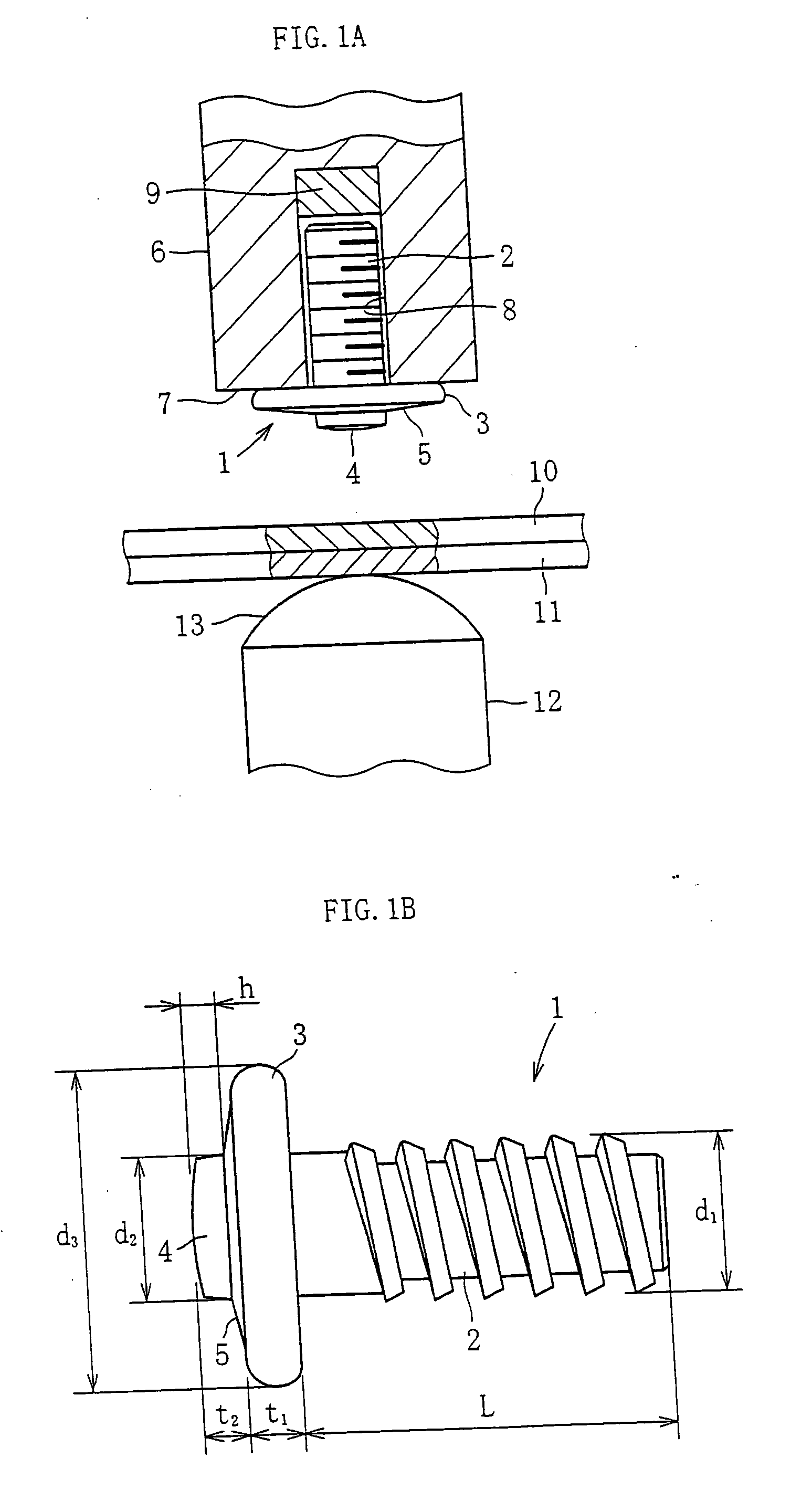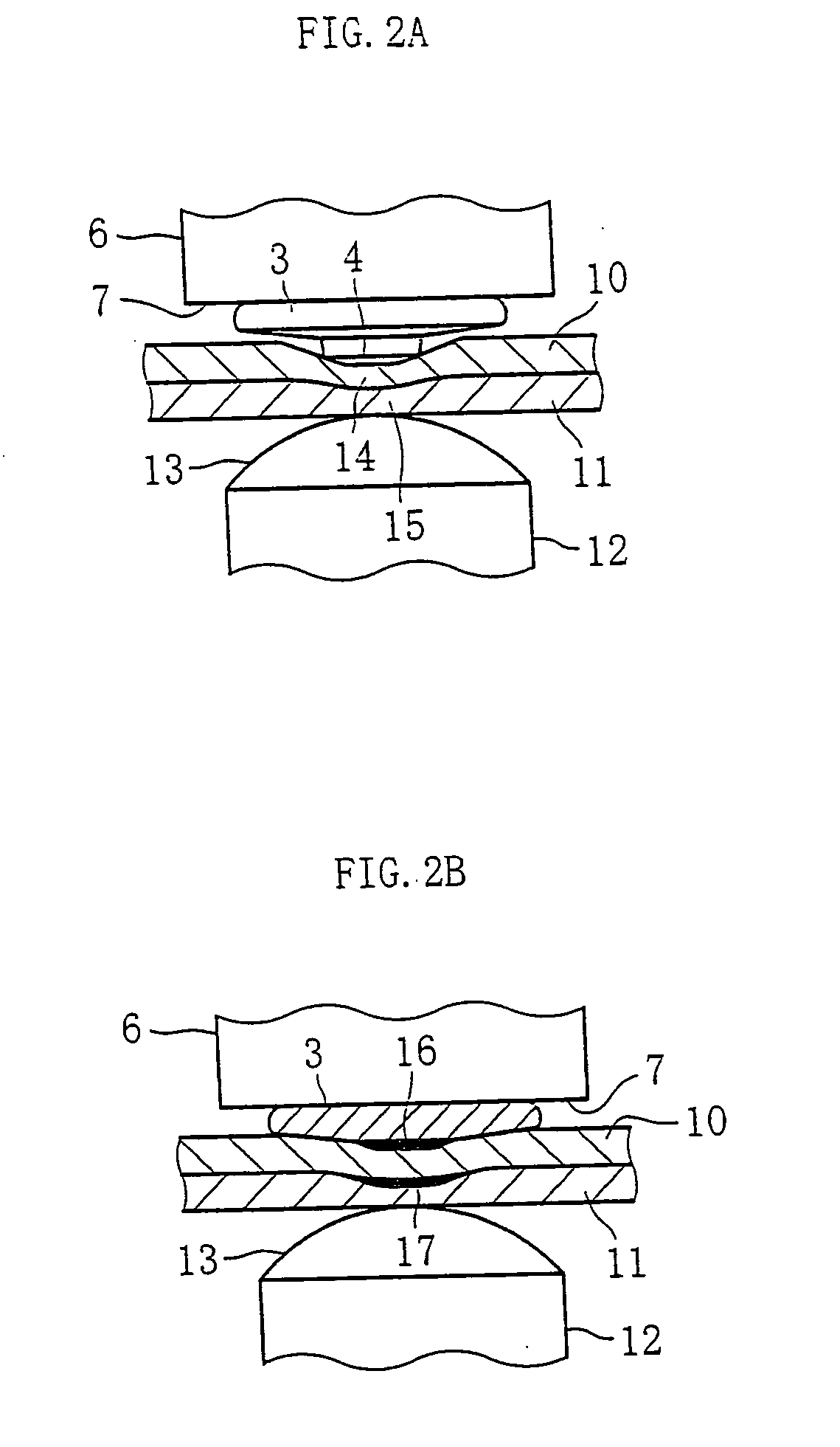Method of welding shaft-like part on plurally piled steel plates
a technology of plural piled steel plates and shafts, which is applied in the field of welding methods, can solve the problems of increasing the number of process steps, the current density of the welding current being lower than a predetermined value, and the lack of weld strength, so as to reduce the thickness of at least the steel sheet
- Summary
- Abstract
- Description
- Claims
- Application Information
AI Technical Summary
Benefits of technology
Problems solved by technology
Method used
Image
Examples
Embodiment Construction
[0020]FIG. 1A depicts an outline of a welding device and FIG. 1B depicts a projection bolt as an example of a shaft-like part. The shaft-like part 1 has a bolt stem 2, which is the stem portion, having a circular flange 3 integrated therewith, the flange 3 being centrally formed with a circular projection 4 smaller in diameter than the flange 3. A gentle slope 5, such as a conical surface and a spherical surface, extends between the projection 4 and the outer periphery of the flange 3. Further, the shaft-like part 1 is made of iron, which is a magnetic body.
[0021] Various dimensions of the projection bolt as shown in FIG. 13 are exemplified in the following table. When the overall thickness (t1-t2) of the bolt head including the flange 3 and projection 4 amounts to 3 mm, the axial dimension, or thickness, of the slope 5 is 0.2 mm.
EXAMPLEDIMENSION12STEM PORTIONLENGTH L1214DIAMETER d155FRANGETHICKNESS t11.81.7DIAMETER d31012PROJECTIONHEIGHT h56DIAMETER d21.01.1(mm)
[0022] A movable ...
PUM
| Property | Measurement | Unit |
|---|---|---|
| thickness | aaaaa | aaaaa |
| thickness | aaaaa | aaaaa |
| diameter | aaaaa | aaaaa |
Abstract
Description
Claims
Application Information
 Login to View More
Login to View More - R&D
- Intellectual Property
- Life Sciences
- Materials
- Tech Scout
- Unparalleled Data Quality
- Higher Quality Content
- 60% Fewer Hallucinations
Browse by: Latest US Patents, China's latest patents, Technical Efficacy Thesaurus, Application Domain, Technology Topic, Popular Technical Reports.
© 2025 PatSnap. All rights reserved.Legal|Privacy policy|Modern Slavery Act Transparency Statement|Sitemap|About US| Contact US: help@patsnap.com



